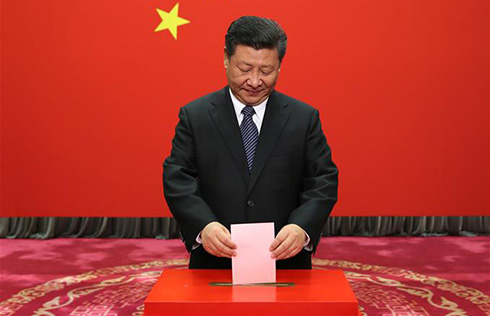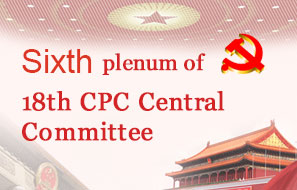Tibet's 'independence day' just a farce
BEIJING - As Tibetans in China bask in festivity to celebrate the "Water Snake Losar", or the Tibetan New Year's Day, some separatists are inciting commemorations of Tibet's so-called "100th Independence Day".
Propaganda for the planned February 13 commemorations have appeared on websites of Students for a Free Tibet, a New York-based organization of exiled Tibetans advocating "Tibet's independence", "Tibetan Youth Congress" as well as popular social networking sites such as Facebook.
Such fanfare is just a farce in the present tense, and a slap in the face in retrospect of foreign aggression to China's modern history -- including that of Tibet.
"Solid" evidence the "Tibet independence" advocates cited was the so-called "Tibetan Proclamation of Independence", which they claimed to have been issued by the 13th Dalai Lama in 1913.
As a matter of fact, the document unveiled by Students for a Free Tibet last May was sheer fabrication, way apart from the original document, which was an internal speech on Buddhism and published in the form of a letter in 1932.
Re-creation of the "independence proclamation" was just a copycat of Dutchman Michael Walt van Praag's misconception in his 1987 publication, "The Status of Tibet".
In this book, van Praag said Tibet gained independence in 1913, marked by the 13th Dalai Lama's signing of the document.
The Dutchman attributed this piece of information to Tsepon Wangchuk Deden Shakabpa, a former aristocrat and official of Old Tibet who published "Tibet, A Political History" in English in 1967.
In this book, Shakabpa, who was for Tibet's independence, said the 13th Dalai Lama described Tibet as a "small, religious and independent nation" in a 1913 declaration of Buddhism.
But researchers on modern history and Tibetan studies claim the exact word the Dalai Lama used in this all-Tibetan declaration was "region" (bodljongs in Tibetan) instead of "nation" or "country" which translated into "rgylkhab" in Tibetan.
Historical facts over the past centuries provide evidence against the "Tibet independence" myth.
Tibet came under the direct rule of the Chinese central government during the Yuan Dynasty in the 13th century. In 1288, the Yuan regime formalized a ministry-level agency to administer the entire Tibetan region.
During the Qing Dynasty, all the Dalai Lama reincarnations required approval from Beijing.
After the Republic of China was founded in 1911, it reaffirmed the central government's authority over Tibet in the republic's first constitution.
Tibet elected 20 delegates to the national congress in 1913.
The 13th Dalai Lama and the 9th Panchen Lama both sent representatives to the national leadership conference of the Republic of China in 1931.
In 1940, the national government set up its Lhasa branch of the Mongolian and Tibetan Affairs Commission.
The "Tibet independence" myth was just a fantasy that evolved during the late 19th century as a product of imperialist invasion -- particularly by the British invaders.
In 1888 and 1904 British troops invaded Tibet twice and were resisted by local Tibetan people.
At least four times during the Kuomintang's rule, the British offered military supplies to Tibet's local government to instigate uprisings.
Representatives of Great Britain and China met in 1913-1914 to negotiate a treaty marking out the boundary lines between India and its northern neighbors.
But the Chinese government never recognized the Simla Convention, which attempted to grant China secular control over "Inner Tibet," while recognizing the autonomy of "Outer Tibet" under the Dalai Lama's rule.
Behind the back of the Chinese delegates, the British created the notorious "McMahon Line" in an under-the-table deal with Tibetan representative Xazha, which the Chinese government never accepted.
According to the deal, Tibet was to cede 90,000 square kilometers of Chinese territory to Britain in exchange for further British pressure on China to seek Tibet's independence.
The "McMahon Line" was never accepted by the Chinese government. But foreign intervention continued until after Tibet's liberation in 1951.
Looking back on history, it's easy to see what the "Tibet independence" myth is all about and who is behind the fantasy.
It is therefore ridiculous for the overseas separatist forces to play up the farce and expect applause from the audience.




















